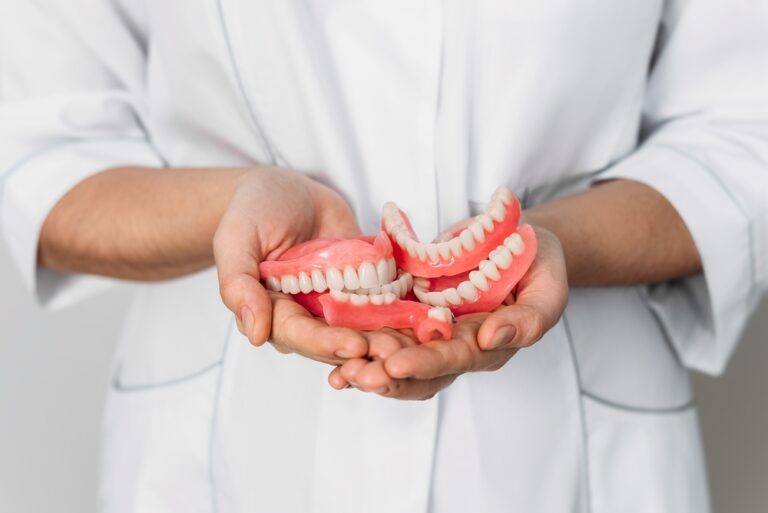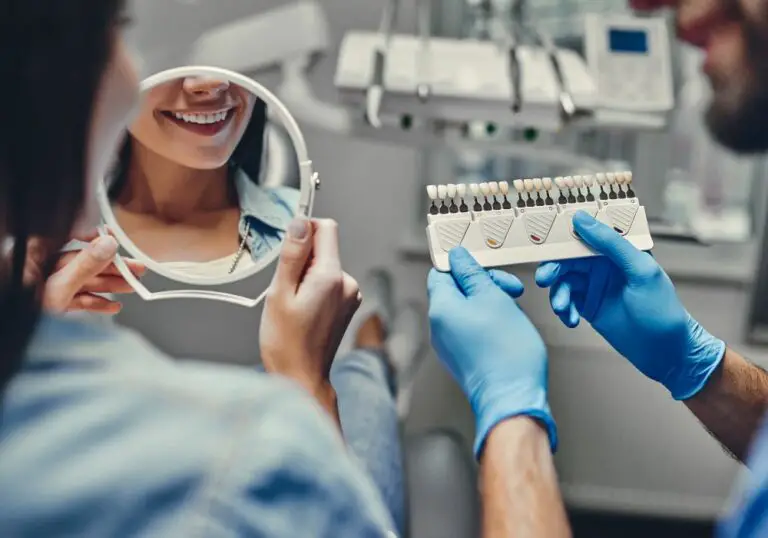Are you wondering when you can start using your back teeth after wisdom teeth removal? It’s common to have questions about what to expect during the recovery process, and when you can resume your normal activities, such as eating. After all, your back teeth are important for chewing and breaking down food. In this article, we’ll explore when it’s safe to use your back teeth after wisdom teeth removal.
When you have your wisdom teeth removed, it’s important to take care of the surgical site to promote healing and prevent complications. You’ll need to follow your dentist or oral surgeon’s instructions for aftercare, which may include avoiding certain foods and activities for a period of time. But when can you start using your back teeth again? The answer depends on several factors, such as the type of extraction you had and how well you’re healing. We’ll provide some general guidelines to help you determine when it’s safe to resume using your back teeth.
Understanding Wisdom Teeth Extraction
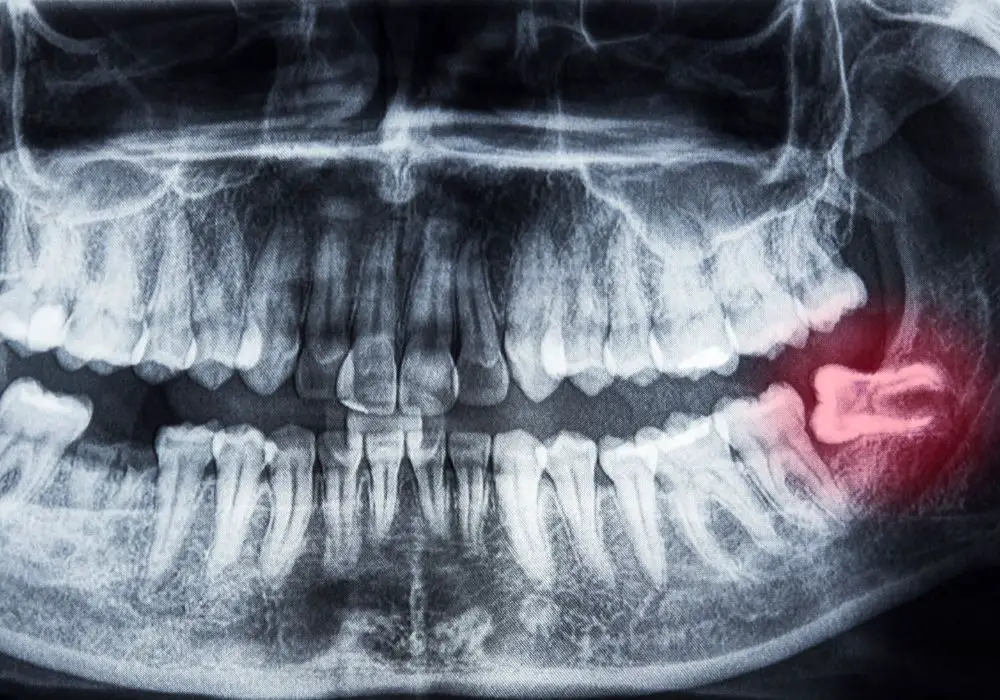
If you are experiencing pain, infection, or other dental problems, it is likely that you need to have your wisdom teeth extracted. Wisdom teeth, also known as third molars, are the last set of teeth to emerge in your mouth. They typically appear between the ages of 17 and 25, and there are four wisdom teeth in total – two on the top and two on the bottom.
Wisdom teeth extraction is a surgical procedure that involves removing one or more wisdom teeth. The procedure is usually performed under local anesthesia, which means that you will be awake but won’t feel any pain. In some cases, general anesthesia may be used, which means that you will be asleep during the procedure.
After the procedure, you will need to rest for a few days and avoid strenuous activity. You may experience some pain and swelling, but this can be managed with pain medication and ice packs. It is important to keep your mouth clean to prevent infection, but you should avoid brushing or flossing near the extraction site for the first few days.
In some cases, the wisdom teeth may be impacted, which means that they are unable to emerge fully or at all. This can lead to pain, infection, and other dental problems. In these cases, it is especially important to have the wisdom teeth extracted to prevent further complications.
Overall, wisdom teeth extraction is a common and safe procedure that can help alleviate pain and prevent dental problems. If you are experiencing pain or other issues with your wisdom teeth, talk to your dentist or oral surgeon to determine if extraction is necessary.
Post-Extraction Period
After your wisdom teeth have been extracted, you will need to take some time to recover. This period can be uncomfortable, but with proper care, you can minimize your discomfort and speed up your recovery time.
During the first 24 hours after your extraction, it is important to rest and avoid any strenuous activity. You should also avoid drinking through a straw or smoking, as this can dislodge the blood clot that forms in the extraction site and lead to a painful condition called dry socket.
You should also avoid eating solid foods during the first day and stick to soft, cool foods like yogurt, applesauce, and ice cream. This will help to soothe your mouth and reduce swelling. You can gradually start to introduce more solid foods into your diet as your mouth heals, but be sure to chew on the opposite side of your mouth to avoid irritating the extraction site.
After the first 24 hours, you can start gently rinsing your mouth with warm salt water to help keep the extraction site clean. You should also brush your teeth carefully, avoiding the extraction site. Be sure to follow any additional care instructions provided by your dentist or oral surgeon.
It is normal to experience some pain and swelling after your wisdom teeth are extracted. You can manage this discomfort with over-the-counter pain medications like ibuprofen or acetaminophen. If your pain is severe or does not improve after a few days, be sure to contact your dentist or oral surgeon.
Overall, the post-extraction period can be uncomfortable, but with proper care and attention, you can minimize your discomfort and speed up your recovery time.
Initial Healing Stage
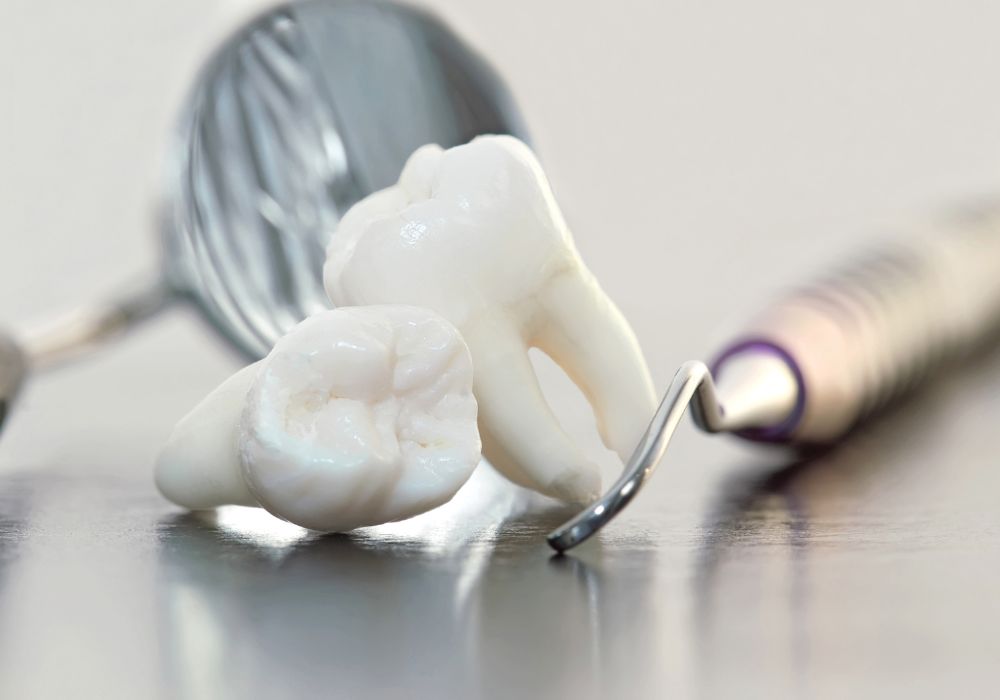
If you have just had your wisdom teeth removed, you may be wondering when you can start using your back teeth again. The answer to this question depends on the stage of healing you are in. In this section, we will discuss the initial healing stage, which lasts for the first few days after surgery.
First 24 Hours
During the first 24 hours after surgery, it is important to avoid using your back teeth as much as possible. This is because the blood clot that forms in the socket where your tooth was removed is still fragile and can easily be dislodged. If the blood clot is dislodged, it can lead to a painful condition called dry socket.
To avoid dislodging the blood clot, you should stick to a soft or liquid diet for the first 24 hours. Avoid using a straw, as the suction can also dislodge the blood clot. Instead, drink directly from a cup. You should also avoid smoking or using tobacco products, as the sucking motion can also dislodge the blood clot.
First 48 Hours
During the first 48 hours after surgery, you can start to gradually introduce more solid foods into your diet. However, you should still avoid using your back teeth as much as possible. Stick to foods that are easy to chew and swallow, such as scrambled eggs, mashed potatoes, and soup.
You should also continue to avoid using a straw and smoking or using tobacco products. If you experience any pain or discomfort, you can take over-the-counter pain medication as directed by your dentist or oral surgeon.
First 72 Hours
By the end of the first 72 hours after surgery, the blood clot in the socket should be more stable. At this point, you can start to use your back teeth more, but you should still be cautious. Stick to soft or easily chewable foods, and avoid anything that is hard, crunchy, or sticky.
You should also continue to avoid using a straw and smoking or using tobacco products. If you experience any pain or discomfort, you can continue to take over-the-counter pain medication as directed by your dentist or oral surgeon.
In summary, during the initial healing stage after wisdom teeth removal, it is important to avoid using your back teeth as much as possible to prevent dislodging the blood clot. Stick to a soft or liquid diet for the first 24 hours, gradually introduce more solid foods over the next 48 hours, and be cautious when using your back teeth during the first 72 hours.
Secondary Healing Stage
During the secondary healing stage, which typically lasts from days 3 to 7 after wisdom teeth removal, you may experience some discomfort, but it should be less intense than during the first few days. You may also notice some swelling and bruising, but these symptoms should begin to improve.
At this stage, your body is working hard to heal the surgical site. The blood clot that formed during the initial healing stage will begin to dissolve, and your body will start to replace it with granulation tissue. This tissue is rich in blood vessels and helps to promote healing.
It’s important to continue to take care of yourself during this stage to ensure proper healing. Here are some tips to help you through the secondary healing stage:
- Continue to take any prescribed pain medication as directed by your dentist or oral surgeon.
- Rinse your mouth gently with warm salt water several times a day to help keep the surgical site clean and promote healing.
- Avoid using straws, as the suction can dislodge the blood clot and delay healing.
- Stick to soft, nutritious foods like soups, smoothies, and mashed potatoes. Avoid spicy or acidic foods, as they can irritate the surgical site.
- Avoid smoking or using tobacco products, as they can delay healing and increase your risk of complications.
- Continue to rest and take it easy, avoiding strenuous activities that could disrupt the surgical site.
By following these tips and taking good care of yourself, you can help ensure a smooth and successful recovery after wisdom teeth removal.
When to Use Back Teeth
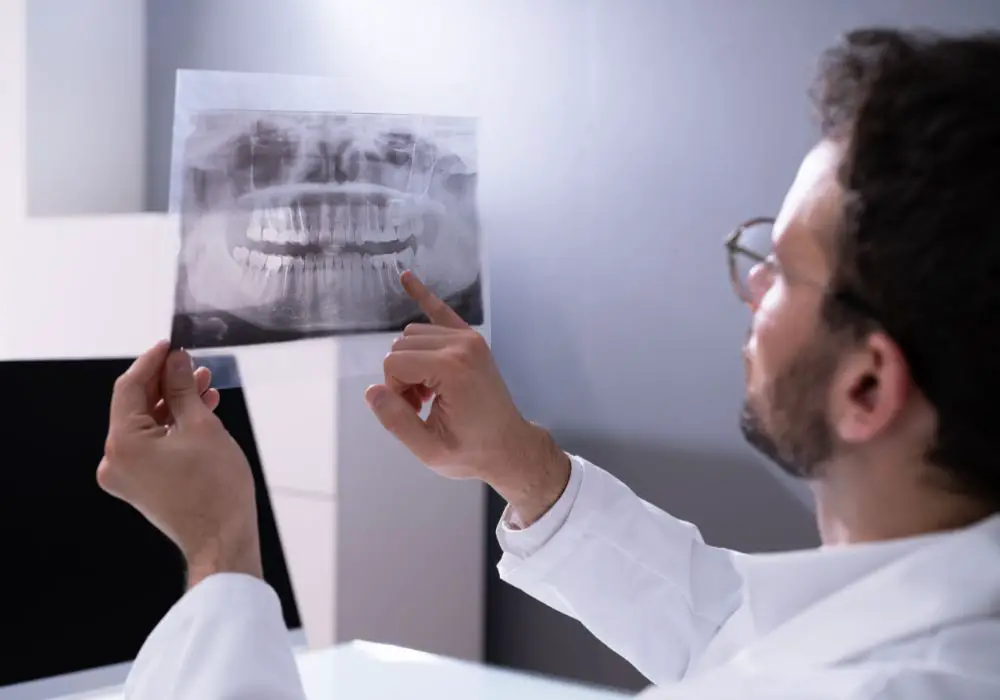
After getting your wisdom teeth removed, it is important to give yourself enough time to heal before using your back teeth again. This will help prevent any complications or damage to the surgical site. Here are some guidelines to follow:
Soft Foods
During the first week after surgery, stick to soft foods that do not require much chewing. This will give your mouth time to heal and reduce the risk of any complications. Some examples of soft foods include:
- Mashed potatoes
- Yogurt
- Soup
- Applesauce
- Smoothies
Semi-Solid Foods
After 2-3 weeks, you can start to introduce semi-solid foods into your diet. These foods require a little more chewing but are still easy to eat. Some examples of semi-solid foods include:
- Scrambled eggs
- Pasta
- Soft fruits (e.g. bananas, peaches)
Regular Foods
After about a month, you should be able to eat regular foods again. However, it is important to still be careful when chewing and to avoid any hard or crunchy foods that could damage the surgical site.
Listen to Your Body
It is important to listen to your body and not push yourself too hard. If you experience any pain or discomfort when chewing, take a break and try again later. It is better to take it slow and give yourself enough time to heal than to risk causing further damage.
By following these guidelines and listening to your body, you can ensure a smooth recovery and get back to using your back teeth in no time.
Factors Influencing Healing Time
The healing time after wisdom teeth removal can vary depending on several factors. Here are some factors that can influence how long it takes for you to use your back teeth after wisdom teeth removal:
1. Type of Extraction
The type of extraction you had can affect your healing time. A simple extraction, where the tooth is fully erupted and can be easily removed, usually has a faster healing time than a surgical extraction, where the tooth is impacted and requires more extensive surgery to remove.
2. Age
Your age can also play a role in how long it takes for you to heal after wisdom teeth removal. Younger people tend to heal faster than older adults.
3. Overall Health
Your overall health can affect your healing time. If you have underlying health issues, such as diabetes or a weakened immune system, it may take longer for you to heal after wisdom teeth removal.
4. Smoking
Smoking can slow down the healing process and increase the risk of complications after wisdom teeth removal. It’s best to avoid smoking for at least 24 hours after surgery and to quit smoking altogether during the healing period.
5. Post-Operative Care
Proper post-operative care can also affect your healing time. Following your dentist’s instructions for aftercare, such as avoiding hard or crunchy foods and rinsing your mouth with saltwater, can help speed up the healing process.
In summary, healing time after wisdom teeth removal can vary depending on several factors. It’s important to follow your dentist’s instructions for aftercare and to take care of yourself during the healing period to ensure a smooth recovery.
Potential Complications

After getting your wisdom teeth removed, it is important to be aware of potential complications that may arise during the healing process. Here are some common complications to look out for:
Dry Socket
Dry socket occurs when the blood clot that forms in the tooth socket after extraction becomes dislodged or dissolves before the wound has healed. This can cause severe pain and delay the healing process. To prevent dry socket, avoid smoking, drinking through a straw, and rinsing your mouth vigorously for the first few days after surgery.
Infection
Infection can occur if bacteria enter the wound site. Symptoms of infection include fever, swelling, and pus discharge. To prevent infection, follow your dentist’s instructions for aftercare, including taking antibiotics if prescribed.
Nerve Damage
Nerve damage is a rare but serious complication of wisdom teeth removal. It can cause numbness or tingling in the lips, tongue, or chin. In some cases, nerve damage may be permanent. To minimize the risk of nerve damage, make sure to choose an experienced oral surgeon and follow their instructions carefully.
Bleeding
Bleeding is common after wisdom teeth removal, but excessive bleeding can be a sign of a more serious problem. If bleeding persists for more than 24 hours, contact your dentist or oral surgeon immediately.
Sinus Problems
In rare cases, the removal of upper wisdom teeth can cause sinus problems, such as sinusitis or a hole in the sinus cavity. Symptoms of sinus problems include pain, pressure, and congestion in the sinuses. If you experience these symptoms after surgery, contact your dentist or oral surgeon.
By being aware of these potential complications and taking steps to prevent them, you can ensure a smooth and successful recovery from wisdom teeth removal.
Tips for Faster Recovery
After wisdom teeth removal, it is important to take proper care of your mouth to ensure a speedy recovery. Here are some tips to help you recover faster:
1. Follow Your Dentist’s Instructions
Your dentist will provide you with specific instructions to follow after your wisdom teeth removal. It is important to follow these instructions to avoid any complications and ensure a faster recovery. These instructions may include how to care for the surgical site, what foods to eat, and what activities to avoid.
2. Manage Pain and Swelling
Pain and swelling are common after wisdom teeth removal. To manage pain, your dentist may prescribe pain medication or recommend over-the-counter pain relievers. Applying an ice pack to the affected area can also help to reduce swelling.
3. Eat Soft Foods
For the first few days after your wisdom teeth removal, stick to soft foods such as soup, mashed potatoes, and yogurt. Avoid hard, crunchy, or sticky foods that can irritate the surgical site.
4. Use Saltwater Rinse
Rinsing your mouth with saltwater can help to keep the surgical site clean and promote healing. Mix one teaspoon of salt with eight ounces of warm water and swish it around your mouth for 30 seconds before spitting it out.
5. Avoid Smoking and Drinking Alcohol
Smoking and drinking alcohol can slow down the healing process and increase the risk of complications. Avoid these activities for at least 24 hours after your wisdom teeth removal.
By following these tips, you can ensure a faster and smoother recovery after your wisdom teeth removal. Remember to take it easy and give your body time to heal. If you have any concerns or questions, don’t hesitate to contact your dentist.
Frequently Asked Questions
When can I eat normally after wisdom teeth removal?
After wisdom teeth removal, it is important to follow a soft food diet for the first few days. You can gradually start introducing solid foods back into your diet as the pain and swelling subside. However, you should avoid hard, crunchy, and sticky foods for at least a week. It is best to consult your dentist or oral surgeon for specific dietary instructions based on your individual situation.
How soon can you talk after wisdom teeth removal?
You can talk immediately after wisdom teeth removal, but you may experience some difficulty due to swelling and soreness in your mouth. It is best to rest your mouth for the first few hours after surgery and avoid talking excessively. You can gradually resume normal speaking as the swelling and pain subside.
Day by day wisdom teeth recovery timeline
The recovery timeline for wisdom teeth removal varies from person to person. Generally, the first 24-48 hours after surgery are the most critical. You may experience some pain, swelling, and bleeding during this time. By the third day, the swelling should start to subside, and you can gradually resume normal activities. It may take up to a week for the pain and swelling to completely subside.
Wisdom teeth food timeline
After wisdom teeth removal, it is important to follow a soft food diet for the first few days. You can start introducing solid foods back into your diet as the pain and swelling subside. Here is a general timeline for introducing different types of foods back into your diet:
- Day 1-2: Liquids and soft foods such as soup, smoothies, and mashed potatoes
- Day 3-4: Soft foods such as scrambled eggs, oatmeal, and pasta
- Day 5-7: Semi-solid foods such as fish, chicken, and vegetables
- Day 7 and beyond: Gradually resume your normal diet
How long does it take for wisdom teeth holes to close?
The length of time it takes for wisdom teeth holes to close depends on various factors such as the size of the hole and how well you take care of the wound. On average, it takes about 1-2 weeks for the holes to close completely. However, it may take longer for larger holes or if you experience complications such as dry socket.
When is dry socket no longer a risk?
Dry socket is a painful condition that can occur after wisdom teeth removal. It happens when the blood clot that forms in the socket where the tooth was removed becomes dislodged or dissolves, exposing the bone. The risk of dry socket is highest in the first few days after surgery. Once the socket has started to heal and the blood clot is stable, the risk of dry socket decreases significantly. Typically, the risk of dry socket is no longer a concern after about a week.



